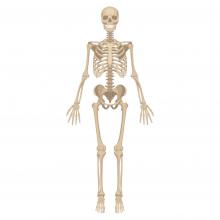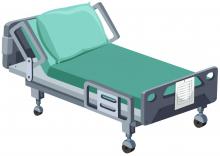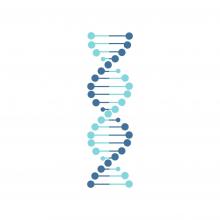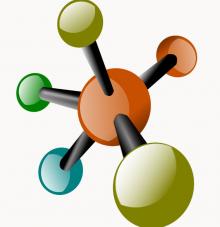Recent Publications

Novel Transgastric Endoluminal Segmental Esophagectomy and Primary Anastomosis Technique: A Hybrid Transgastric Thoracoscopic Esophagectomy for the Treatment of High Grade Dysplasia and Early Esophageal Cancer in a Porcine Ex vivo Model (Front Surg .)
Multiple modalities are currently employed in the treatment of high grade dysplasia and early esophageal carcinoma. While they are the subject of ongoing investigation, surgery remains the definitive modality for oncological resection. Esophagectomy, however, is traditionally a challenging surgical procedure and carries a significant incidence of morbidity and mortality. Endoscopic mucosal resection (EMR) and endoscopic submucosal dissection (ESD) are considerably less invasive alternatives to esophagectomy in the diagnosis and treatment of high grade dysplasia, early esophageal squamous cell carcinoma and adenocarcinoma. However, many early esophageal cancer patients, with favorable histology, who could benefit from endoscopic resection, are referred for formal esophagectomy due to lesion characteristics such as unfavorable lesion morphology or recurrence after previous endoscopic resection. In this study we present a novel, hybrid thoracoscopic transgastric endoluminal segmental esophagectomy with primary anastomosis for the potential treatment of high grade dysplasia and early esophageal cancer in a porcine ex vivo model as a proposed bridge between endoscopic resection and the relatively high mortality and morbidity formal esophagectomy procedure. (Anton Kvasha, Muhammad Khalifa, Seema Biswas, Moaad Farraj, Zakhar Bramnik, Igor Waksman)

Elon Glassberg, Avi Benov: A prehospital scoring system for predicting the need for emergent blood product transfusion (Transfusion . )
Several tools have been proven to predict the need for massive transfusion in trauma casualties, yet tools that are easily applicable in the prehospital setting for predicting the need for any blood product transfusion in the emergency department (ED) are lacking.

Elite Arnon-Sheleg: The role of nuclear medicine in the workup of chronic thromboembolic pulmonary hypertension (CTEPH) in a patient suffering from syncope and shortness of breath (Hebrew) (Harefuah .)
In patients diagnosed with pulmonary hypertension (PH), V/Q lung scintigraphy performed in Nuclear Medicine departments can demonstrate pulmonary embolisms and diagnose chronic thromboembolic pulmonary hypertension (CTEPH). Lung scintigraphy has higher sensitivity and specificity for CTEPH in comparison to other imaging methods, and is considered to be the method of choice in the workup of patients with unexplained PH. In the case presented, lung scintigraphy performed at two time points in a patient with PH demonstrated chronic bilateral pulmonary embolisms and aided in the diagnosis of CTEPH.

Tomer Meirson: The common sense behind clinical trial names: an empirical study of trial acronyms (Account Res .)
The use of acronyms to name clinical trials, some of which might be manipulative or even coercive, is increasingly popular yet controversial. We aimed to evaluate whether trial acronyms are associated with appealing linguistic cues born of marketing psychology using trade names of perfumes.
Gon Carmi, Alessandro Gorohovski, Milana Frenkel-Morgenstern: EvoProDom: Evolutionary modeling of protein families by assessing translocations of protein domains (FEBS Open Bio . )
Here, we introduce a novel "evolution of protein domains" (EvoProDom) model for describing the evolution of proteins based on the "mix and merge" of protein domains.

David Karasik: A genome-wide scan for pleiotropy between bone mineral density and nonbone phenotypes (Bone Res .)
Osteoporosis is the most common metabolic bone disorder globally and is characterized by skeletal fragility and microarchitectural deterioration. Genetic pleiotropy occurs when a single genetic element is associated with more than one phenotype. We aimed to identify pleiotropic loci associated with bone mineral density (BMD) and nonbone phenotypes in genome-wide association studies.

David Carasso, Shemy Carasso: The Mechanical Cost of Decreasing Conduction Velocity: A Mathematical Model of Pacing-Induced Lower Strain (J Atr Fibrillation .)
To simulate the effect of decreasing conduction velocity (Cvel) on average segmental myocardial strain using mathematical modeling.

Tal Shachar: Reconstructive Microsurgery in the COVID-19 Environment (Plast Reconstr Surg Glob Open . )
The COVID-19 pandemic has presented unique challenges to the plastic surgery field. Substantial changes have been incorporated in hospital and practice protocols in all branches of medicine. Organic medical teams were placed on scheduled shifts to prevent cross-infection, and some working teams were discontinued. Remote technology consultations and deliberations were instituted in hospitals and community medical services to maintain the flow of information on patient status. Several mitigation strategies were implemented during these times throughout medical facilities. We present those implemented in our facility to ensure adequate labor, resources, and facilities along with proper protocols for patient selection and management according to predetermined risk assessment criteria with the hope to assist the healthcare staff to minimize mortality risks.

Tomer Meirson: Informative censoring of surrogate end-point data in phase 3 oncology trials (Eur J Cancer . )
Kaplan-Meier (K-M) analysis, the cornerstone of cancer clinical trial interpretation, assumes that censored patients are no more or less likely to experience an event than those followed. We sought to investigate the patterns of censoring in surrogate end-points of oncology randomised controlled trials (RCTs) and examine the relationship between censoring in practice-changing treatments that failed to demonstrate survival gain.
Ben Shabat Moti, Eliya Oz, Azrilin Olga , Gross Bella, Sela Shifra, Palzur Eilam: New Cortical Neurodegenerative Pathways in the Hypertensive Rat Brain (Cereb Cortex . )
Hypertension is a risk factor for neurodegenerative diseases. We hypothesized that chronic hypertension underlies neurodegeneration. In this study, we examined the expression of brain cortical proteins involved in homeostasis, apoptosis, and brain functions in Spontaneously Hypertensive Rats (SHR) compared with normotensive Wistar-Kyoto (WKY) rats.

Arik Sheinenzon, Mona Shehadeh, Michelis Regina, Ety Shaoul, Ohad Ronen: Serum albumin levels and inflammation (Int J Biol Macromol . )
Albumin is the most abundant protein in the plasma and has a regulatory role in the distribution of body fluids, acid-base physiology, and binding of essential components in the bloodstream. C-reactive protein (CRP) is produced by hepatocytes and is commonly used to assess inflammation. It was previously noted that acute-phase concentrations of proteins, such as CRP, tend to rise in inflammatory conditions, while albumin concentrations tend to decline. This study assessed the correlation between albumin levels and various inflammatory indices (CRP, WBC, PLT) of patients hospitalized at the Galilee Medical Center over a period of 3 months.

Sofia Soltsman, Yeela Tomsis, Anat Konforty, Izhar Ben Shlomo: The Impact of Prenatal Depression in Patients of High Risk Pregnancy Clinic on Obstetric Outcomes (Psychiatr Q . )
Prenatal depression is common and has been associated with risky maternal behavior, postpartum depression, and atypical child development. Still, its association with adverse perinatal outcomes is complex. The aim of our study was to look for this potential association in our region.

Boris Fichtman, Amnon Harel: Expanding the phenotype of NUP85 mutations beyond nephrotic syndrome to primary autosomal recessive microcephaly and Seckel syndrome spectrum disorders (Hum Mol Genet . )
Primary autosomal recessive microcephaly and Seckel syndrome spectrum disorders (MCPH-SCKS) include a heterogeneous group of autosomal recessive inherited diseases characterized by primary (congenital) microcephaly, the absence of visceral abnormalities, and a variable degree of cognitive impairment, short stature and facial dysmorphism. Recently, biallelic variants in the nuclear pore complex (NPC) component nucleoporin 85 gene (NUP85) were reported to cause steroid-resistant nephrotic syndrome (SRNS). Here, we report biallelic variants in NUP85 in two pedigrees with an MCPH-SCKS phenotype spectrum without SRNS, thereby expanding the phenotypic spectrum of NUP85-linked diseases.

Omri Levor, Jacob Bornstein: Outcomes of a fixed skeletonised mini mesh implant for pelvic organ prolapse repair with uterine preservation (J Obstet Gynaecol .)
Mesh repair of pelvic organ prolapse (POP) is complicated, causing erosions, postoperative pain and surgical failure. We hypothesised that reducing the mesh size and fixating it would result in significant cure rates and reduce complication rates.






